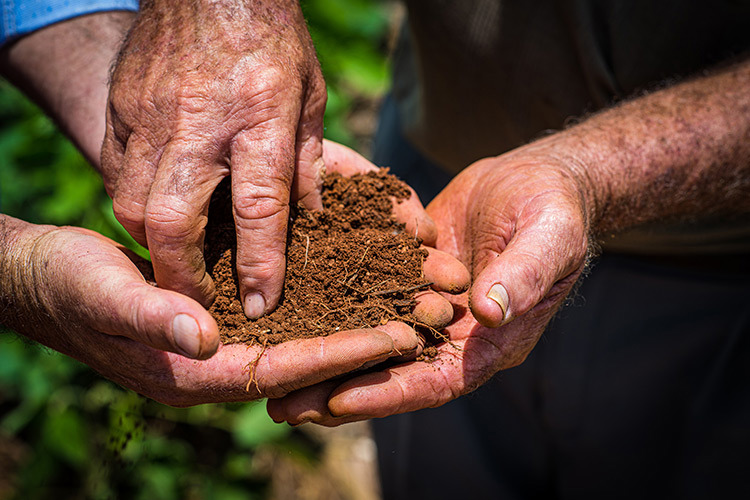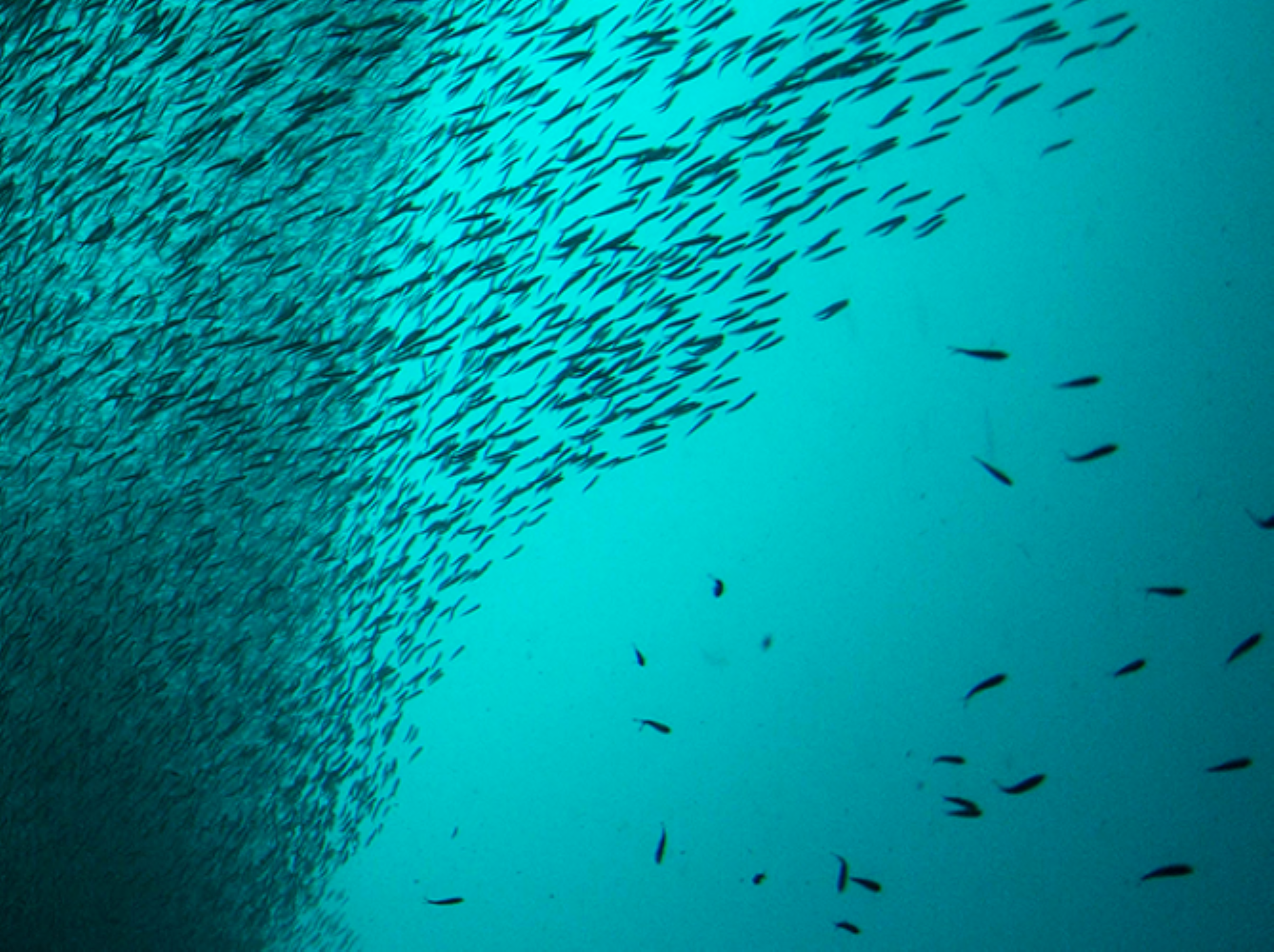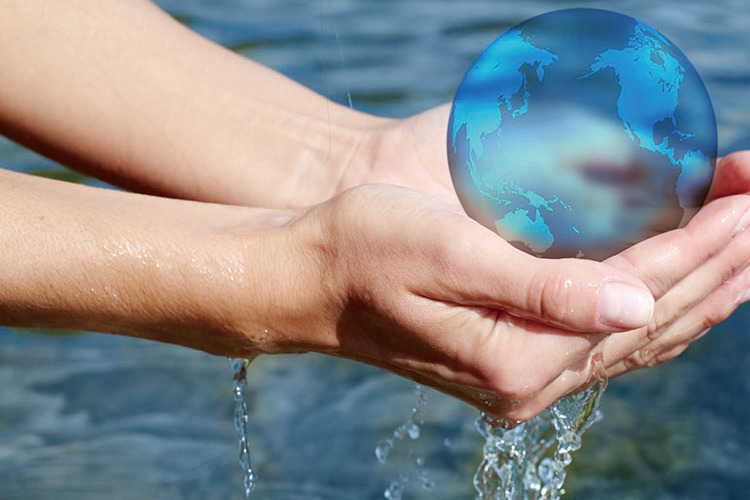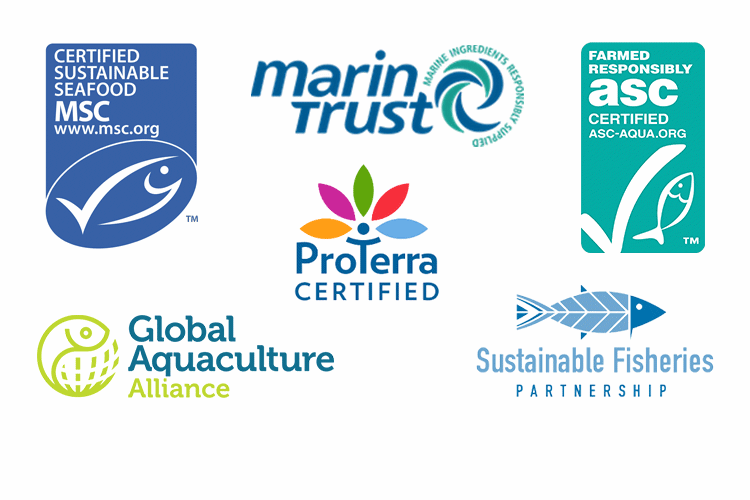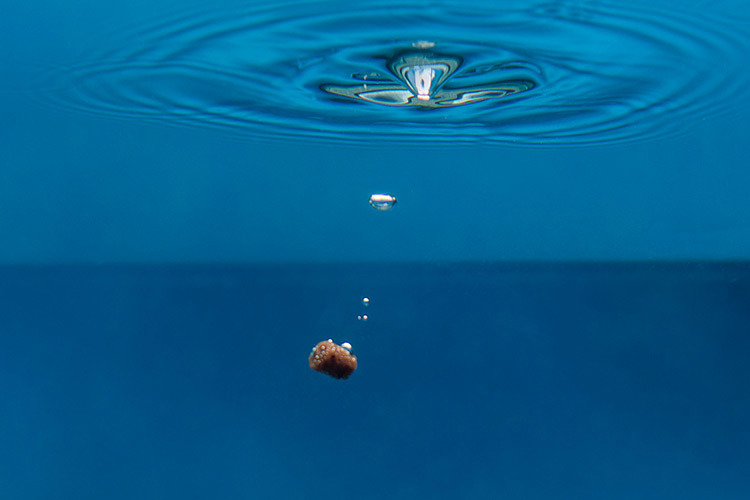
Emissions 2021
Below in this text is the data for our greenhouse (GHG) emissions calculated with CO2 equivalents (CO2eq), and the environmental footprint of our operations plus the nutrient release of nitrogen and phosphorus.
The CO2eq reduction from the raw materials (scope 3) is 28 % and for our energy carriers (scope 1 & 2) the reduction is 18 % from 2018 to 2021. Through our mother company Nutreco, Skretting has committed to the science-based target initiative (SBTi) with a 30 % reduction of CO2eq for scope 1 and 2 and a 39 % reduction for scope 3 towards 2030 with 2018 as the baseline year.
Feed plays an essential role in ensuring the health and wellbeing of farmed fish, and can greatly improve the efficiency of the aquaculture process. While gains are made in optimising feed efficiency, feed also contributes one of the biggest environmental impacts.
Carbon footprint is an estimate of the greenhouse emissions and climate change impact of activity – for example producing one kilogram of aquaculture feed. Typically, a carbon footprint is calculated by estimating not just the CO2 emissions that the activity in question causes, but also factors in emissions of other greenhouse gases (such as methane and nitrous oxide) and in some cases other types of climate impacts as well, for example the effect of deforestation. For simplicity, all these impacts are added together and expressed as a single number in terms of carbon dioxide equivalent (CO2eq): the amount of CO2 that would create the same amount of warming.
The true carbon footprint of one kilogram of feed includes not only the direct GHG emissions resulting from the manufacturing process and the transportation of the feed to the farm.
It also includes a whole host of indirect GHG emissions, such as those caused by growing the crops used in the feed, processing of feed ingredients, mining activities, production of vitamins, transport of the raw materials and so on. These are just a few of the processes involved. Transport of feed ingredients from the market to Norway is for instance less than 4% of the feed carbon footprint at the point where it is delivered to the fish farmer.
Carbon footprint of Skretting Norway's fish feed (all units kg CO2eq/kg)
The 2021 numbers show a major drop in carbon footprint for raw materials since our baseline year of 2018. This is mostly related to soy from Brazil — actions on the ground and improved data quality, but also increased use of fishmeal, European soy and guar meal.
Brazilian soy now with primary data and a 100 % deforestation and conversion free supply chain
The reduction of the CO2eq footprint from the raw materials is mostly related to new sustainability actions and better data quality for soy protein concentrate (SPC) from Brazil — in addition to increased use of fish meal, European soy and guar meal. Our Brazilian soy vendors have started to calculate the CO2eq emission from their own production. This gives us the possibility to use primary data instead of generic data for Brazilian soy. To allow the use of primary data is based on the methods and revisions used to calculate the GHG emissions by our vendors and the soy certification foundation Pro Terra. The demand for an amortization period of 20 years to avoid initial LUC emissions are still adhered in our calculations.
In addition, our Brazilian soy vendors have cut all links to deforestation in their soy supply chain. Nils Herman Ranum in the Rainforest foundation said to the Washington Post that “we now have an important producer of protein for human consumption that can claim to be fully deforestation free”.
This historic supply chain initiative is a benchmark to inspire other protein sectors, as well as other markets linked to the soy supply
Carbon footprint (CO2eq) per kg feed economic allocated with LUC (PEFCR standard)
| 2021 | 2020 | 2019 | 2018 | |
| Scope 1 & 2 (Manufacturing process)* | 0,06 | 0,06 | 0,06 | 0,08 |
| Scope 3 (Raw materials) | 2,24 | 2,48 | 2,66 | 3,09 |
| Scope 3 (Inbound logistics/freight) | 0,09 | 0,10 | 0,10 | 0,10 |
| Total — Carbon footprint of feed (at factory gate) | 2,39 | 2,64 | 2,82 | 3,27 |
Carbon footprint (CO2eq) absolute tonne emissions, economic allocated with LUC (PEFCR standard)
| 2021 | 2020 | 2019 | 2018 | |
| Scope 1 (manufacturing process, direct GHG) | 13211 | 14203 | 13843 | 14906 |
| Scope 2 (manufacturing process, indirect GHG)* | 23960 | 24098 | 22111 | 30313 |
| Scope 3 (raw materials and inbound logistics) | 1369268 | 1542514 | 1534499 | 1803468 |
| Total — Carbon footprint absolute | 1406439 | 1580815 | 1570453 | 1848687 |
The European Union's Product Environmental Footprint Category Rules (PEFCR) requires carbon footprint to be reported with the economic allocation method including land use change (LUC). So, the tables above is our primary calculation method, but we have also included data for economic allocation without land use change (LUC) below.
Carbon footprint (CO2eq) per kg feed economic allocated without LUC
| 2021 | 2020 | 2019 | 2018 | |
| Scope 1 & 2 (Manufacturing process)* | 0,06 | 0,06 | 0,06 | 0,08 |
| Scope 3 (Raw materials) | 1,47 | 1,54 | 1,56 | 1,56 |
| Scope 3 (Inbound logistics/freight) | 0,09 | 0,10 | 0,10 | 0,10 |
| Total — Carbon footprint of feed (at factory gate) | 1,62 | 1,70 | 1,72 | 1,74 |
Carbon footprint (CO2eq) absolute tonne emissions, economic allocated without LUC
| 2021 | 2020 | 2019 | 2018 | |
| Scope 1 (manufacturing process, direct GHG) | 13211 | 14203 | 13843 | 14906 |
| Scope 2 (manufacturing process, indirect GHG)* | 23960 | 24098 | 22111 | 30313 |
| Scope 3 (raw materials and inbound logistics) | 916596 | 982128 | 924645 | 936655 |
| Total — Carbon footprint absolute | 953767 | 1020429 | 960599 | 981874 |
Explanation of Carbon footprint (CO2eq) calculations (method)
Calculations are done based on calculation principles outlined in PEFCR feed for food producing animals (2018), aligned with ISO 14040/44:2006
- preferred database: GFLI; other quality-assured and accepted LCA databases were used if no ingredient specific dataset is available in GFLI
- coverage: full bill of ingredients included, i.e. also trace elements and vitamins, in alignment with PEFCR feed standard
- rework ingredients were assigned with average carbon footprint values of formulations across those latest formulations excl. rework
- where no countries of origins are available, the global average dataset is selected; if no global average dataset is available the European average is taken, if this is also not available, a country-specific dataset is selected
- inbound logistics for feed ingredients were calculated with estimated transport distances and intra-continentaland intercontinental global default data for international transport as given by the PEFCR Guide. For 2018 and 2019 we have used the same dataset as for 2020.
New method to calculate GHG emissions for Norwegian produced electricity increased the footprint from our own manufacturing process
In 2020 Norwegian authorities demanded that Norwegian power suppliers moved from location based to a market-based CO2eq calculation with background in EU's Renewable Energy Directive. This is in compliance with the science-based target initiative (SBTI) which Skretting has committed to through our mother company Nutreco. We are using the market-based calculation for electricity for every year, also for the years prior to this new demand. Compared to historic printed reports, the number for 2018-2020 has increased due to this new calculation method. E.g. The location-based calculation had 10.7 g/CO2eq for 1 KWh (IEA 2021), while the market-based calculation uses 405 g/CO2eq for 1 KWh (NVE 2021).
* A market-based calculation for electricity is used for every year. Click here for a more detailed explanation of market-based vs. location-based calculation.
The environmental footprint of our operations (scope 1 &2)
Skretting Norway operates in accordance with the Pollution Control Act (Act of 13 March 1981 No.6 Concerning Protection Against Pollution and Concerning Waste). Each operating plant has permits related to emissions to air, effluents to water and ground and handling of waste. Detailed description of permits for each operating plant together with historical records of emissions can be found here http://www.norskeutslipp.no/
Environmental footprint of operations
| Environmental performance indicator | 2021 | 2020 | Change | Unit |
| Energy consumption | 211 | 212 | -0,5 % | kWh per tonne |
| Carbon emissions* | 63,2 | 64,0 | -1,3 % | CO2eq kg per tonne |
| Water withdrawal | 345 | 385 | -10,4 % | liters per tonne |
| Waste generation | 4,0 | 4,7 | -14,9 % | kg per tonne |
* A market-based calculation for electricity is used for every year. Click here for a more detailed explanation of market-based vs. location-based calculation.
Absolute CO2eq emission per energy carrier from operations (tonne)
Through our mother company Nutreco, Skretting has committed to a 30 % reduction of CO2eq for scope 1 and 2 in compliance with the science-based target initiative (SBTi) with 2018 as our baseline year. The reduction from 2018 to 2021 is 18 %.
| Energy carrier | 2021 | 2020 | 2019 | 2018 |
| Natural Gas | 3488 | 4654 | 4423 | 4816 |
| Diesel | 267 | 293 | 254 | 269 |
| LPG | 1365 | 1387 | 1227 | 1238 |
| Electricity* | 23960 | 24098 | 22111 | 30313 |
| LNG | 8091 | 7869 | 7939 | 8583 |
| Absolute carbon emissions (tonne) | 37170 | 38301 | 35953 | 45219 |
* A market-based calculation for electricity is used for every year. Click here for a more detailed explanation of market-based vs. location-based calculation.
Nutrient release
Nutrients such as phosphorus and nitrogen are essential for life and these elements occur naturally in the water column of both fresh and marine environments. In the environment they function as nutrients for algae growth. The reported nutrient discharge cannot be used to measure the effect of the nutrients in the environment (the farm site). The effect of the nutrient load must be measured in the ecosystem through for example analyses of water and the surrounding environment of the farm.
We will regularly update and inform the industry about the nutrient discharge of nitrogen and phosphorus from our standard product lines.
Nutrient release of nitrogen and phosphorus. Grams per kg of feed*
| Nitrogen | Phosphorus | |
| In faeces | 7,6 | 5,5 |
| Dissolved in water | 29,5 | 1,0 |
| Total discharge | 37,1 | 6,5 |
*The actual emission can vary with body composition, feed waste and feed conversion factor.
Changes to this article
This article is updated 1 November 2022, with the addtion of tables with absolute tonne emissions of greenhouse (GHG) emissions. A market-based calculation for electricity is used for every year regarding scope 2, and the numbers are updated accordingly. The title rows have also been updated with the inclusion of which scope 1, 2 and 3 the data fall under. There were also some round up errors fixed where the calculations in Excel had more decimal numbers than shown in this web-version.
This article is updated 2 November 2022, where CO2 has been changed to CO2eq og GHG emissions in order to make it clear that we are measuring greehouse (GHG) emissions.
Disclaimer
The provided carbon footprint data are based on internal calculations following the core guiding principles of the standard PEFCR Feed for Food Producing Animals (2018), but are not based on fully compliant PEFCR studies. Although Skretting has taken care to ensure that the information contained herein is as accurate as possible and up to date, Skretting does not warrant the accuracy, reliability or completeness of the information. The values have not been externally verified. The information provided is for informational purposes only and is intended for internal business use only. The reader is solely responsible for any interpretation or use of the material contained herein. The footprint data are subject to change (e.g. due to ongoing database development or better supply chain information). Furthermore, cradle-to-gate footprint values are not allowed to be used for comparison or comparative assertions among each other or with other feed footprint data in accordance with international LCA standards. Animal feed is an intermediate product in the food production chain and the footprint attached to it only reflects part of the life cycle. Without considering feed performance/ functionality and downstream impacts, comparison is neither allowed nor meaningful.
